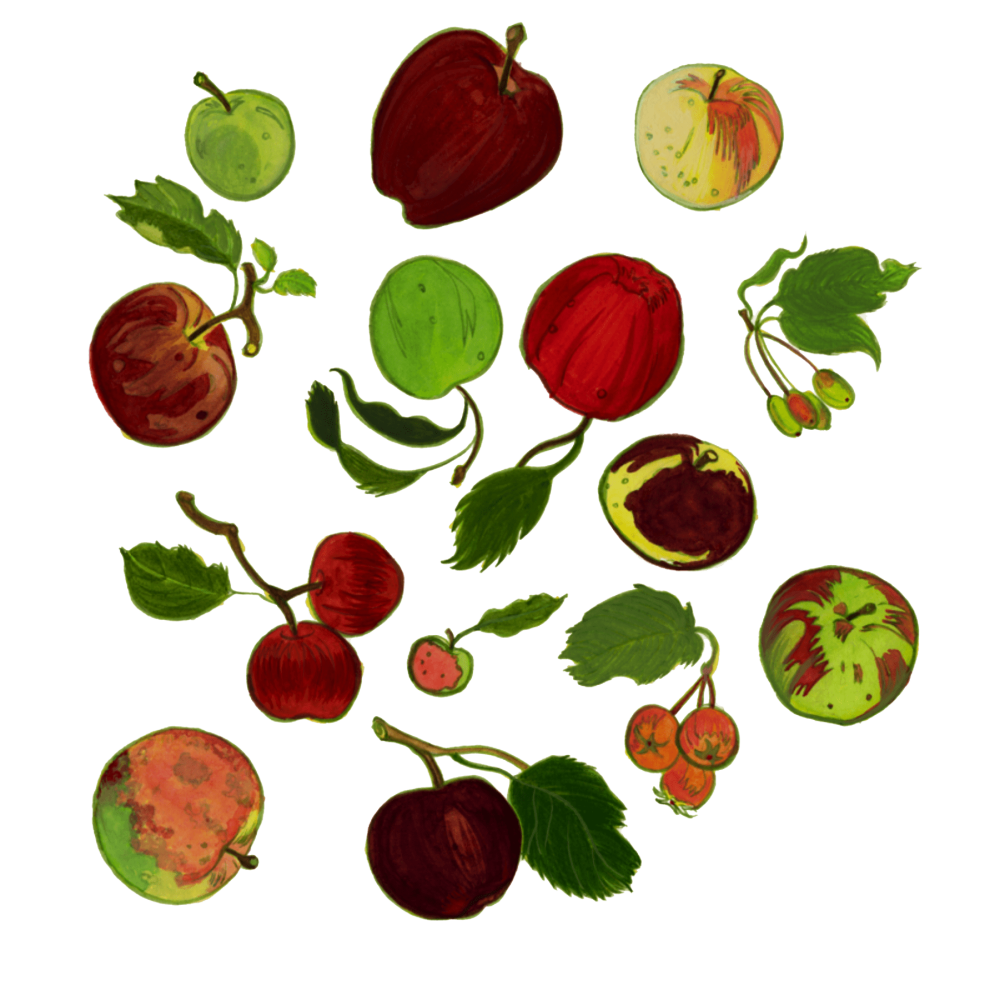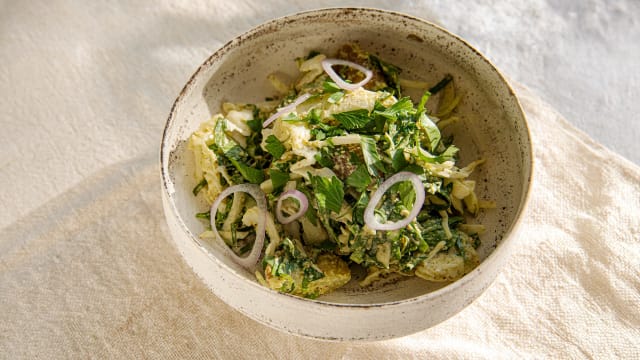Apple

Latin name: Malus domestica
Uses: fruit, beverage, alcohol
What are apples?
These rose-family tree fruits are highly nutritious and very versatile, delicious both raw and cooked in sweet and savory dishes. Apples are hugely popular, and are one of the most diverse domesticated plants we eat, represented by an astounding 7,500 or so known cultivars — each with its own distinctive flavor, appearance, and nutritional profile. Apples’ importance is reflected in their presence in numerous ancient origin stories, among them Greek mythology, Germanic paganism, and the Christian story of how humans lost their innocence.
Why are apples healthy?
The rightly beloved apple is an excellent source of fiber, particularly pectin, a soluble fiber that can bind cholesterol and slow glucose absorption. Apples are also rich in vitamin C and antioxidants, which combine with their anti-inflammatory properties to make them a perfect portable snack. According to studies, apples have been found to protect against cancer, heart disease, and diabetes. Eating them regularly can keep you regular — they seem to dramatically improve digestive health. They may really keep the doctor away!
What do apples taste like?
Each type of apple has a particular combination of sweetness, crispness, fragrance, and juiciness, plus the tartness of malic acid (named for apples). Some varieties have a honey-like aroma and sweetness, whereas others have an undertone of roasted coffee or almond oil. Granny Smith is the quintessential grassy-green tart apple flavor used for hard candies and apple pie, and Golden Delicious has a citrus-rose flavor. The juicy tang of a Jazz is nearly effervescent, and Ashmead’s Kernel, an English heirloom, tastes like a pear-scented Yankee Candle unless you let it mellow in storage for a spell. No matter what you look for in an apple, there’s a variety you’re bound to love.
How do I use apples?
Raw, out of hand, remains the best way to enjoy a perfectly ripe apple. Raw apples are also great dipped in everything from caramel to fondue. In pies and hot cereals, cooked apples love warm spices and brown sugar, but they’re often used to balance savory foods like sage-flecked sausage, pork loin, and onions. Apples provide crunch, sweetness, and acidity to Waldorf and chicken salads. Apple cider vinegar is an excellent substitute for lemon juice in many recipes (and if it’s raw vinegar it’s also probiotic).
What do apples pair well with?
Apples get along famously with pie spices, caramelly sweetness like maple syrup and honey, herbs like sage and thyme, and all kinds of tree nuts (and peanuts). Their sweet-acid flavor is also a perfect foil for sharp cheese. Broil a slice of aged white cheddar or blue cheese onto your next apple pie turnover, or slip slivers of apples into your next grilled cheese sandwich.
Where do apples grow?
Wild apples originated in Central Asia (near Kazakhstan) and have been cultivated globally for millennia. Early American colonists brought English apples to their new home not for eating, but for pressing and fermenting into hard cider. Today, China produces about half the world’s apples.
How to buy apples:
Look for firm, shiny fruit that isn’t bruised, mushy, or wrinkled.
Fun apple fact:
Apples don’t come true from seed; that is, if you plant all of the seeds from a single apple, each seed will grow into a tree producing different types of apples that may or may not bear any resemblance to the apple whence it came. This is why apple trees are grown from scions (grafts) instead of seed — a guarantee that the fruit will be a clone of its parent.


